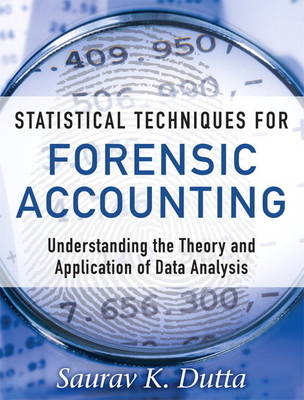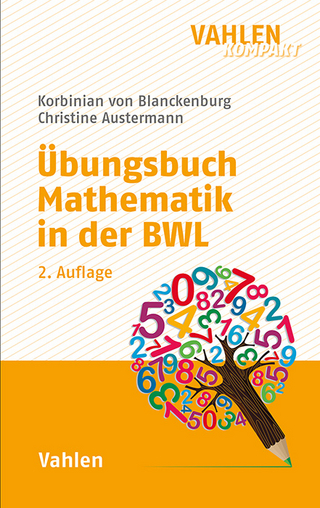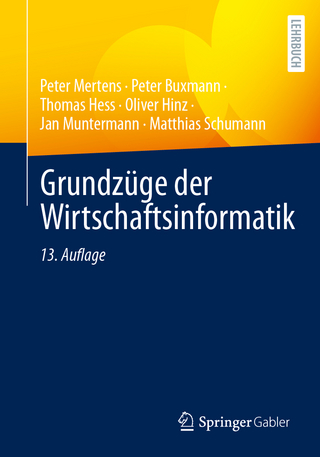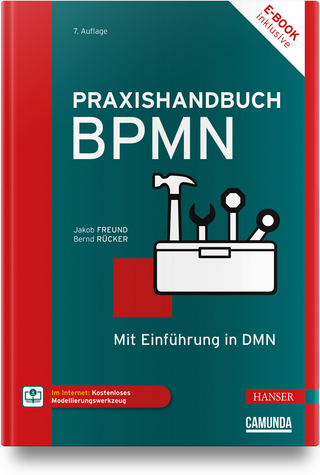
Statistical Techniques for Forensic Accounting
Addison Wesley (Verlag)
978-0-13-313381-3 (ISBN)
- Titel ist leider vergriffen;
keine Neuauflage - Artikel merken
Exploratory data analysis: identifying the "Fraud Triangle" and other red flags
Data mining: tools, usage, and limitations
Traditional statistical terms and methods applicable to forensic accounting
Uncertainty and probability theories and their forensic implications
Bayesian analysis and networks
Statistical inference, sampling, sample size, estimation, regression, correlation, classification, and prediction
How to construct and conduct valid and defensible statistical tests
How to articulate and effectively communicate findings to other interested and knowledgeable parties
Dr. Saurav K. Dutta is an Associate Professor at the Department of Accounting, Business Law, and Taxation at the State University of New York at Albany, where he previously served as the Chairman of the Department. He has taught at the Graduate School of Management, Rutgers University, and at Zicklin College of Business, Baruch College, New York. He holds a Bachelor of Technology Degree in Aerospace Engineering from the Indian Institute of Technology (Bombay) and a Ph. D. in Accounting from the University of Kansas. His research interests are in applying statistical and analytic methodology to accounting and auditing problems, and his current work involves analyzing problems in financial reporting, as well as studying the accounting aspects of corporate sustainability initiatives. He has published over 25 research papers in academic journals, including Auditing: A Journal of Practice and Theory; Journal of Accounting, Auditing, and Finance; Journal of Accounting and Public Policy; Issues in Accounting Education; Journal of Cost Management; Journal of Corporate Accounting and Finance; International Journal of Technology Management; The Quality Management Journal; Corporate Social Responsibility and Environmental Management; Strategic Finance; and others. Dr. Dutta has presented his research findings at numerous national and international academic conferences and has conducted research seminars at many universities including, Harvard, Oxford, New York University, Rutgers, University of Southern California, Michigan State, Bentley, and Maastricht. He has conducted professional teaching and training seminars at Dai-Ichi-Kangyo Bank, Merrill Lynch, Prudential Insurance Company, and KPMG LLP. He has been invited by the AICPA to conduct workshops on the use of statistics in forensic accounting, and he has also been the “Featured Speaker” for the Corporate Director’s Group. Dr. Dutta has been engaged to design and analyze statistical tests on numerous accounting/litigation projects under the jurisdiction of the New York State Attorney General’s Office, U.S. District Court of the Southern District of New York, and the Securities and Exchange Commission, among others. Some of these engagements involved designing statistical procedures to verify claims for settlements of amounts ranging from $500 million to $6.1 billion and include the settlements for MCI-WorldCom, Global Crossing, Cendant Corp, and HealthSouth. He was involved with the reparations of more than 400 million CHF from the Swiss banks, under the purview of the U.S. District Court of Eastern New York. He has also been engaged to evaluate accounting systems related to hedge accounting, fair value accounting, and mergers and acquisition. Since 2006 he has served as the Subject Matter Expert (SME) for the IMA in their preparation and updating of the CMA examination study guide.
Foreword xiii
Acknowledgments xv
Preface xviii
1 Introduction: The Challenges in Forensic Accounting 1
1.1 Introduction 1
1.2 Characteristics and Types of Fraud 3
1.3 Management Fraud Schemes 7
1.4 Employee Fraud Schemes 11
1.5 Cyber-crime 17
1.6 Chapter Summary 18
1.7 Endnotes 19
2 Legislation, Regulation, and Guidance Impacting Forensic Accounting 21
2.1 Introduction 21
2.2 U.S. Legislative Response to Fraudulent Financial Reporting 22
2.3 The Emphasis on Prosecution of Fraud at the Department of Justice 24
2.4 The Role of the FBI in Detecting Corporate Fraud 26
2.5 Professional Guidance in SAS 99 27
2.6 Chapter Summary 28
2.7 Endnotes 29
3 Preventive Measures: Corporate Governance and Internal Controls 31
3.1 Introduction 31
3.2 Corporate Governance Issues in Developed Economies 33
3.3 Emerging Economies and Their Unique Corporate Governance Issues 34
3.4 Organizational Controls 39
3.5 A System of Internal Controls 41
3.6 The COSO Framework on Internal Controls 46
3.7 Benefits, Costs, and Limitations of Internal Controls 52
3.8 Incorporation of Fraud Risk in the Design of Internal Controls 56
3.9 Legislation on Internal Controls 58
3.10 Chapter Summary 58
3.11 Endnotes 60
4 Detection of Fraud: Shared Responsibility 61
4.1 Introduction 61
4.2 Expectations Gap in the Accounting Profession 64
4.3 Responsibility of the External Auditor 66
4.4 Responsibility of the Board of Directors 68
4.5 Role of the Audit Committee 71
4.6 Management’s Role and Responsibilities in the Financial Reporting Process 75
4.7 The Role of the Internal Auditor 78
4.8 Who Blows the Whistle 80
4.9 Chapter Summary 84
4.10 Endnotes 85
5 Data Mining 89
5.1 Introduction 89
5.2 Data Classification 91
5.3 Association Analysis 93
5.4 Cluster Analysis 95
5.5 Outlier Analysis 98
5.6 Data Mining to Detect Money Laundering 100
5.7 Chapter Summary 103
5.8 Endnotes 103
6 Transitioning to Evidence 105
6.1 Introduction 105
6.2 Probability Concepts and Terminology 106
6.3 Schematic Representation of Evidence 108
6.4 Information and Evidence 110
6.5 Mathematical Definitions of Prior, Conditional, and Posterior Probability 110
6.6 The Probative Value of Evidence 114
6.7 Bayes’ Rule 117
6.8 Chapter Summary 122
6.9 Endnote 123
7 Discrete Probability Distributions 125
7.1 Introduction 125
7.2 Generic Definitions and Notations 126
7.3 The Binomial Distribution 127
7.4 Poisson Probability Distribution 135
7.5 Hypergeometric Distribution 140
7.6 Chapter Summary 145
7.7 Endnotes 147
8 Continuous Probability Distributions 149
8.1 Introduction 149
8.2 Conceptual Development of Probability Framework 150
8.3 Uniform Probability Distribution 156
8.4 Normal Probability Distribution 157
8.5 Testing for Normality 168
8.6 Chebycheff ’s Inequality 170
8.7 Binomial Distribution Expressed as a Normal Distribution 171
8.8 The Exponential Distribution 172
8.9 Joint Distribution of Continuous Random Variables 173
8.10 Chapter Summary 176
9 Sampling Theory and Techniques 179
9.1 Introduction 179
9.2 Motivation for Sampling 180
9.3 Theory Behind Sampling 181
9.4 Statistical Sampling Techniques 182
9.5 Nonstatistical Sampling Techniques 186
9.6 Sampling Approaches in Auditing 189
9.7 Chapter Summary 191
9.8 Endnotes 193
10 Statistical Inference from Sample Information 195
10.1 Introduction 195
10.2 The Ability to Generalize Sample Data to Population Parameters 196
10.3 Central Limit Theorem and non-Normal Distributions 199
10.4 Estimation of Population Parameter 200
10.5 Confidence Intervals 203
10.6 Confidence Interval for Large Sample When Population Standard Deviation Is Known 205
10.7 Confidence Interval for a Large Sample When Population Standard Deviation Is Unknown 209
10.8 Confidence Intervals for Small Samples 211
10.9 Confidence Intervals for Proportions 213
10.10 Chapter Summary 214
10.11 Endnote 218
11 Determining Sample Size 219
11.1 Introduction 219
11.2 Computing Sample Size When Population Deviation Is Known 220
11.3 Sample Size Estimation when Population Deviation Is Unknown 222
11.4 Sample Size Estimation for Proportions 225
11.5 Chapter Summary 228
12 Regression and Correlation 231
12.1 Introduction 231
12.2 Probabilistic Linear Models 232
12.3 Correlation 233
12.4 Least Squares Regression 234
12.5 Coefficient of Determination 236
12.6 Test of Significance and p-Values 237
12.7 Prediction Using Regression 238
12.8 Caveats and Limitations of Regression Models 239
12.9 Other Regression Models 242
12.10 Chapter Summary 245
Index 249
| Erscheint lt. Verlag | 18.7.2013 |
|---|---|
| Verlagsort | Boston |
| Sprache | englisch |
| Maße | 190 x 240 mm |
| Gewicht | 620 g |
| Themenwelt | Mathematik / Informatik ► Informatik |
| Mathematik / Informatik ► Mathematik ► Finanz- / Wirtschaftsmathematik | |
| Mathematik / Informatik ► Mathematik ► Statistik | |
| Recht / Steuern ► Strafrecht ► Kriminologie | |
| Wirtschaft ► Betriebswirtschaft / Management ► Rechnungswesen / Bilanzen | |
| Wirtschaft ► Volkswirtschaftslehre ► Ökonometrie | |
| ISBN-10 | 0-13-313381-8 / 0133133818 |
| ISBN-13 | 978-0-13-313381-3 / 9780133133813 |
| Zustand | Neuware |
| Informationen gemäß Produktsicherheitsverordnung (GPSR) | |
| Haben Sie eine Frage zum Produkt? |
aus dem Bereich


